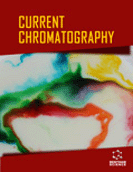Abstract
Background: Air pollutants, such as inorganic compounds (e.g. nitrogen and sulphur oxides, metals, metalloids, respirable particulate matter), as well as organic (e.g. volatile organic compounds, polyaromatic hydrocarbons) have adverse influence on human health. Usually analysis of ionic substances in gaseous samples is preceded by absorption of the gaseous analytes in a liquid or on a solid sorbent. The second option is direct chemical analysis of aerosols, particulate matter, or wet precipitations.
Objective: In order to understand the health effects and mutual interactions between components present in gases and aerosols, several analytical techniques are applied. One of them is ion chromatography which is use to analyse inorganic and organic ionic substances in the air samples. Method: The paper presents the possibility of application of ion chromatography in air analysis, with particular focus on international standards methods. Results: Since its introduction in the middle of 70ies of 20th century, ion chromatography has been one of the versatile and powerful techniques for the analysis of anions and cations mainly in water and wastewater. The introduction of new sample preparation methods, more selective stationary phases and detection modes, allows its application for more complex matrices, such as gaseous and solid samples. Conclusion: Recently, its application in air analysis has increased significantly. The limitation is connected with the appropriate selectivity, and the need to conduct analytes into ionic forms.Keywords: Air pollutants, anions, cations, international standards, ion chromatography, particle matter.
 41
41 1
1

















